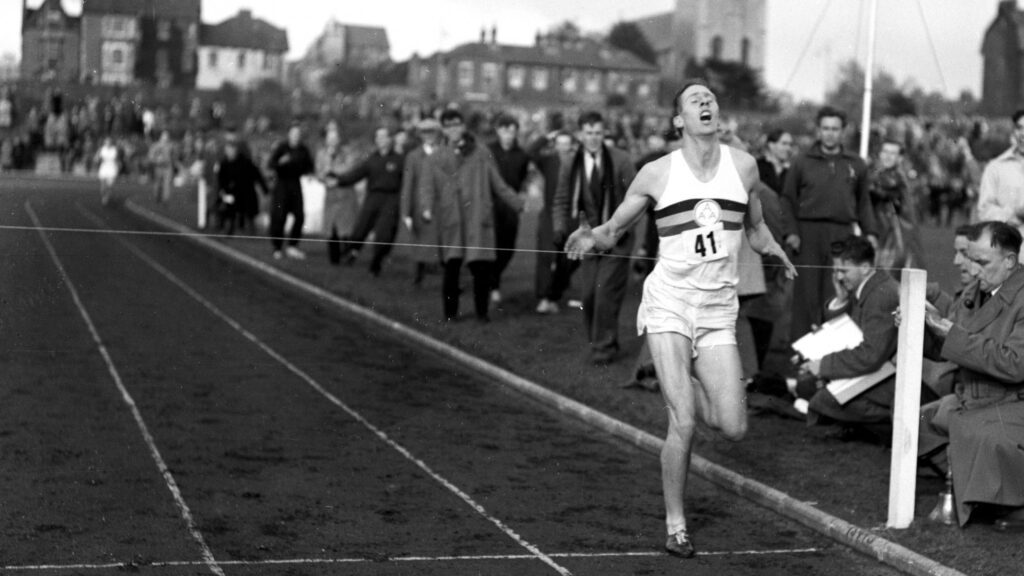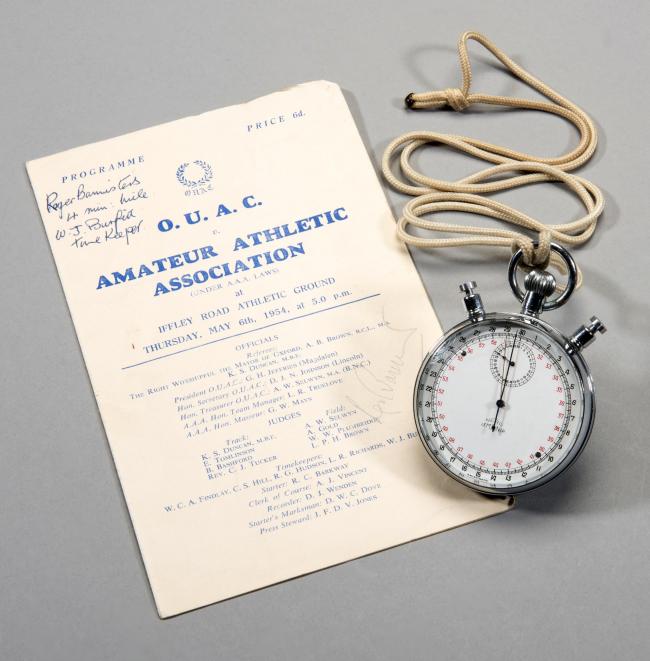Timing the Four Minute Mile

Racing and competitive sports have a long running bond with timekeeping. How else would we count the records that define competitive racing to begin with? As it were, Roger Bannister (England) was the very first 4-minute-mile in officially recorded racing history. We say “officially recorded” because the long sought after title of four minute mile had been purported by plethora people since the 18th century—not long after the invention of the marine chronometer by John Harrison—a benchmark in accurate timekeeping. Most of the evidence for these supposed feats of athleticism were based on anecdotal evidence, though. It wasn’t until the late 19th century that main stream sporting began to take this goal seriously, in precisely measured arenas of sport (a figure of speech, most of these places were simple running tracks). It was a race all on its own to see who could push the limits of human achievement in athletics. About 70 years after Victorian Era athletes took to the track, Roger Bannister finally broke the mold in 1954. His achievement would go on to inspire generations of runners to push the boundaries of human endurance in running, both physically and psychologically..
Where it Happened and What Kept the Time
In specific terms, Bannister set the record on 6th of May 1954. His groundbreaking sprint took place at Oxford on their Iffley Road Track. His official time was 3:59.4—barely making it under the mark. There are plenty of archival recordings of the event, including commentary/interviews with Bannister, via YouTube. What the archival footage and print news didn’t seem to cover much was the precision timekeepers at the event. From start to finish, five men each kept a Lemania “Nero” pocket watch ticking to track the Oxford event.

At the time, Lemania, Omega, and Tissot were three parts of a powerful watchmaking group. It was a timekeeping endeavor of epic precision proportions. For some perspective: Lemania would later design Omega’s Speedmaster movement that went to the moon—accomplishing an astronomical level of mechanical accuracy. Having these Lemania watches at Oxford’s racing event meant there was no “ifs”, “ands”, or “buts” about the official time of Bannister’s run. Unfortunately the advent of electronic watches killed off Lemania—and slowly. From the 70s until the early 90s they stayed afloat until eventually being purchased by Breguet. Despite this, collectors still keep their eyes out for Lemania pieces. A few years back, in fact, an official 4-minute-mile Lemania sold for 20,000 pounds (~24,675USD) at a Sotheby’s auction. Alongside this sale were signed photos of participants in the event. In December of 2017, Lemania got some screen time as an era appropriate piece in TV’s The Crown. Considering the popularity of these pieces in the UK, for their accurate Swiss movements, it was a neat nod to the brand that rang Bannister in.
Modern Records
Bannister died in March of last year at the age of 88. A small handful of runners through the 60s, 70s, 90s, and beyond have come close to (or beaten) Bannister’s 1954 accomplishment. The current record holder is Hicham El Gerrouj of Morocco. Not only has he surpassed all other 4-minute-milers, he holds 7 of the 9 world records for time in middle-distance running. Hicham is likely being timed by atomic clocks and watches these days, which are (when synced up correctly) accurate down to the second every year. However, none of these later achievements in mechanical accuracy and athletic prowess could’ve come to fruition without benchmark moments in athletic achievement—like Roger Bannister’s first under 4 minute run.
Times Ticking has been in operation for more than 30 years, since 1982. We have performed watch repair for customers both locally and internationally. If it Ticks! We KNOW it! Our team of watch repair technicians have a combined experience in watchmaking of over 120 years.

